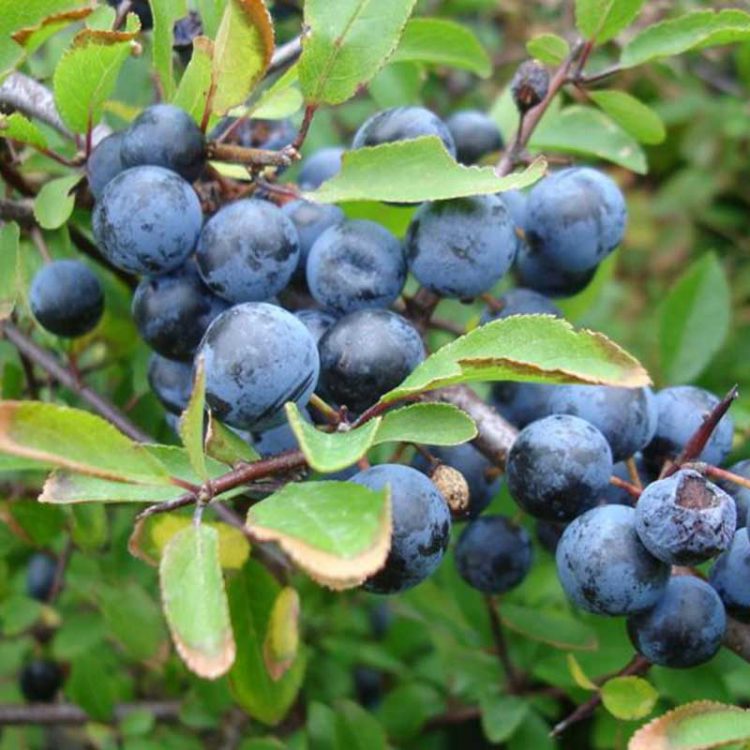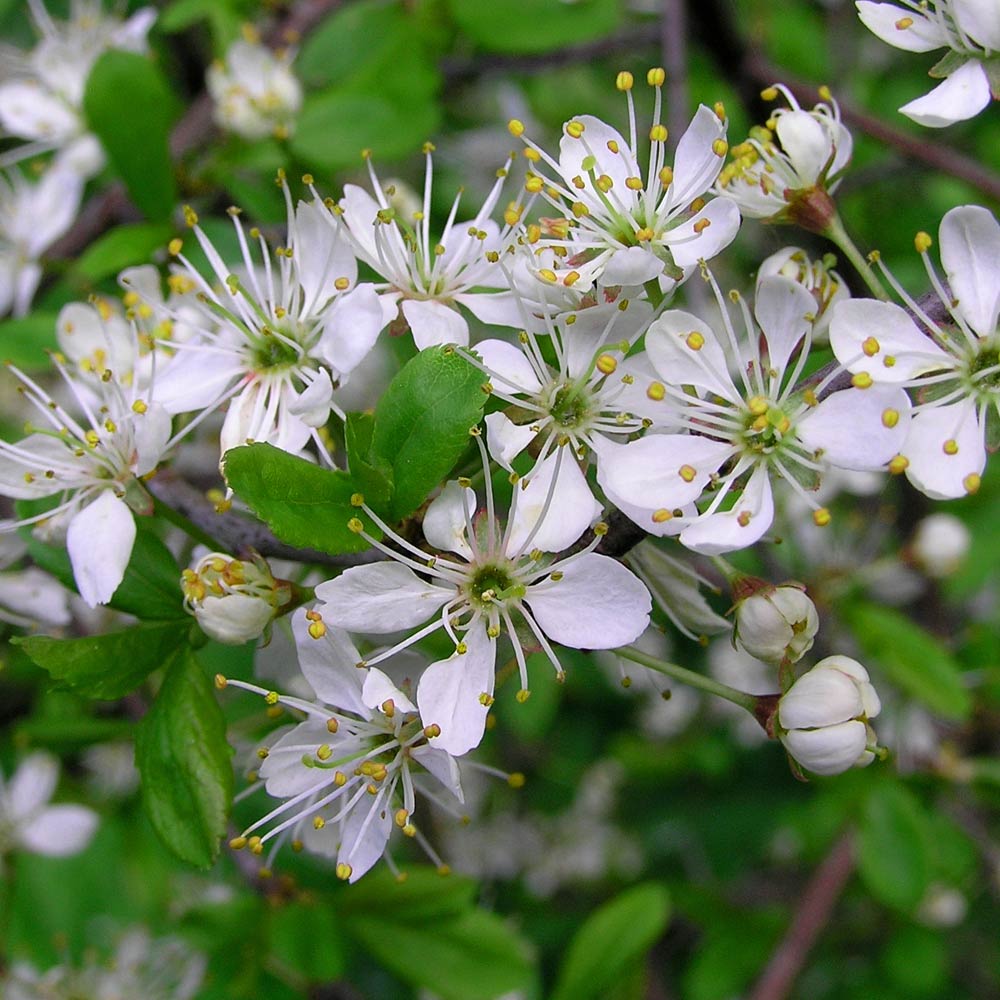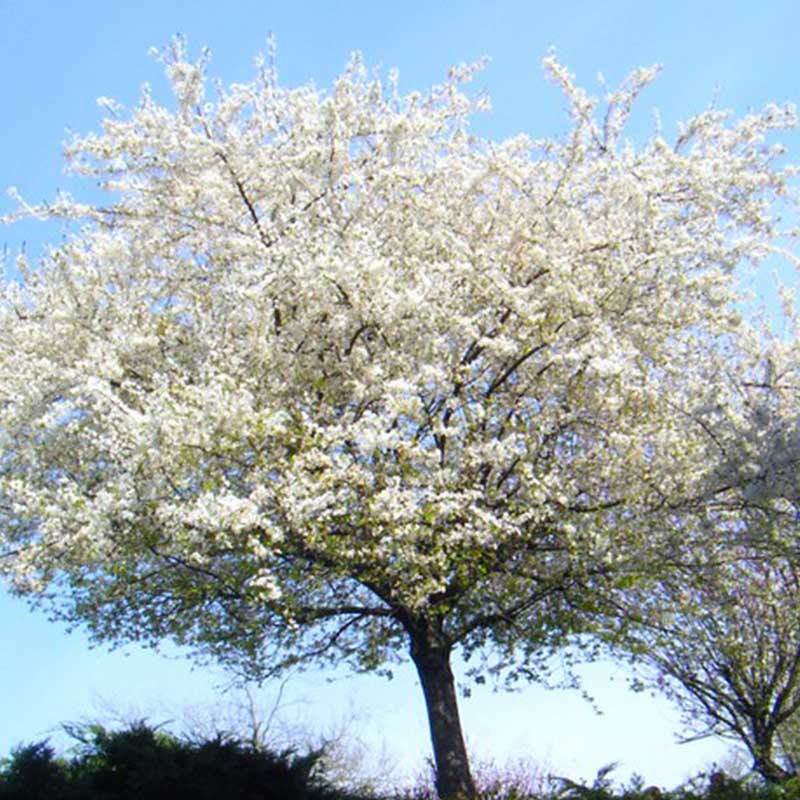Blackthorn – Prunus spinosa
£0.00
Prunus spinosa
Prunus spinosa, called blackthorn or sloe, is a species of flowering plant in the rose family Rosaceae. It is native to Europe, western Asia, and locally in northwest Africa. It is also locally naturalised in New Zealand, Tasmania and eastern North America.
Description
We will donate a percentage to regenerating our forests.
Details:
Prunus spinosa is a large deciduous shrub or small tree growing to 5 metres (16 ft) tall, with blackish bark and dense, stiff, spiny branches. The leaves are oval, 2–4.5 centimetres (0.79–1.77 in) long and 1.2–2 centimetres (0.47–0.79 in) broad, with a serrated margin. The flowers are about 1.5 centimetres (1/2 in) in diameter, with five creamy-white petals; they are produced shortly before the leaves in early spring,[and are hermaphroditic and insect-pollinated. The fruit, called a “sloe”, is a drupe 10–12 millimetres (3/8–1/2 in) in diameter, black with a purple-blue waxy bloom, ripening in autumn and harvested – traditionally, at least in the UK – in October or November after the first frosts. Sloes are thin-fleshed, with a very strongly astringent flavour when fresh.
Blackthorn usually grows as a bush but can grow to become a tree to a height of 6 m. Its branches usually grow forming a tangle
UK sourced and grown: Every sapling that we use is UK sourced and grown to minimise the risk of importing and spreading tree pests and diseases. Seeds are collected and stored in the UK, and they are all coded and batched so that we can track each individual tree.
Ecology
The foliage is sometimes eaten by the larvae of Lepidoptera, including the small eggar moth, emperor moth, willow beauty, white-pinion spotted, common emerald, November moth, pale November moth, mottled pug, green pug, brimstone moth, feathered thorn, brown-tail, yellow-tail, short-cloaked moth, lesser yellow underwing, lesser broad-bordered yellow underwing, double square-spot, black hairstreak, brown hairstreak, hawthorn moth (Scythropia crataegella) and the case-bearer moth Coleophora anatipennella.
Dead blackthorn wood provides food for the caterpillars of the concealer moth Esperia oliviella.
More information
The shrub, with its savage thorns, is traditionally used in Britain and other parts of northern Europe to make a cattle-proof hedge.
The fruit is similar to a small damson or plum, suitable for preserves, but rather tart and astringent for eating, unless it is picked after the first few days of autumn frost. This effect can be reproduced by freezing harvested sloes.
The juice is used in the manufacture of fake port wine, and used as an adulterant to impart roughness to genuine port, into the 20th century. In rural Britain a liqueur, sloe gin, is made by infusing gin with sloes and sugar.
Please be aware that depending upon the time of year you receive your sapling (particularly early spring) it may not look very perky upon arrival, please do not worry once it has been planted it should pick up quickly.
Only logged in customers who have purchased this product may leave a review.





Reviews
There are no reviews yet.